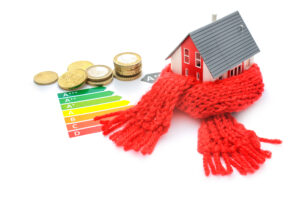 A Simple Guide to Documenting Your Home’s Contents for Insurance
A Simple Guide to Documenting Your Home’s Contents for Insurance
Life is full of surprises, and while we hope they are always pleasant, sometimes the unexpected can take the form of a fire, storm, or other event that damages or destroys our home and belongings. In those challenging moments, the last thing you want to worry about is trying to remember every single item you owned. That’s where a comprehensive home inventory comes in. At Bieritz Insurance we believe in empowering our clients with the tools and knowledge to navigate these situations with greater ease. Creating a home inventory might seem like a daunting task, but it’s a simple yet incredibly valuable step you can take today to protect your future and streamline the insurance claims process.
Why a Home Inventory Matters:
Imagine facing the aftermath of a significant event. Trying to recall every piece of furniture, every article of clothing, every electronic device, and every personal item you owned can be overwhelming and emotionally taxing. Without a detailed record, you might forget valuable items, leading to a lower insurance settlement than you deserve. A well-documented home inventory serves as a crucial record for your insurance company, making the claims process smoother, faster, and ultimately less stressful. It provides clear evidence of what was lost or damaged, helping you receive a fair and accurate settlement to rebuild your life.
Making Inventory Easy: Simple Methods for Success
The good news is that creating a home inventory doesn’t require hours of meticulous handwriting. Modern technology offers several user-friendly methods to document your belongings effectively:
1. The Visual Approach: Photos and Videos
- Room by Room: Walk through each room of your home and take photos or videos of everything. Open drawers and closets to capture their contents. Don’t forget less obvious areas like the attic, basement, and garage.
- Focus on Details: For valuable items, take individual photos and close-ups. Capture identifying details like serial numbers, model names, and any unique features.
- Narrate Your Videos: If you choose video, consider narrating as you go, describing the items and their approximate value or any distinguishing characteristics. This can be incredibly helpful for future reference.
2. The Traditional Route: Lists and Spreadsheets
- Categorize by Room: Create a list or spreadsheet organized by room. This helps ensure you don’t miss anything.
- Be Specific: Instead of just writing “clothes,” list types of clothing (e.g., 5 sweaters, 10 t-shirts, 3 pairs of jeans).
- Include Key Information: For each item, note the brand, model number (if applicable), purchase date (if you remember), and estimated value. Even approximate values are better than nothing.
- Utilize Software: Consider using spreadsheet software (like Excel or Google Sheets) or dedicated home inventory apps. Many apps allow you to store photos, values, and purchase dates in an organized manner.
3. Combining Methods for Comprehensive Coverage:
The most effective approach often involves a combination of visual and written documentation. For example, you might take a video walkthrough of each room and then supplement it with a detailed list of high-value items with their specific details.
Tips for Maintaining Your Home Inventory:
Creating the inventory is just the first step. To ensure its continued usefulness, remember to:
- Update Regularly: Make it a habit to update your inventory whenever you purchase new items or dispose of old ones. A quick annual review is also a good practice.
- Store Securely: Don’t keep your only copy of your inventory at home. Store it in a safe place like a cloud storage service (Google Drive, Dropbox, iCloud), an external hard drive kept off-site, or even with a trusted friend or family member.
- Share with Us (Optional): While you don’t need to give us a detailed inventory, letting us know you have one on file can be helpful during the claims process.
Peace of Mind in Preparation:
Creating a home inventory might seem like one more task on your to-do list, but it’s an investment in your future security and peace of mind. By taking a little time now to document your belongings, you can significantly reduce stress and streamline the insurance claims process should the unexpected occur. At Bieritz Insurance, we are committed to providing you with not only the right insurance coverage but also the resources to navigate life’s challenges. If you have any questions about your homeowners insurance or creating a home inventory, please don’t hesitate to reach out at 607-547-2951. We’re here to help you protect what matters most.


 As winter approaches, homeowners often focus on holiday preparations and staying warm, but it’s equally important to prepare your home for the challenges that the cold season brings. Winterizing your home not only ensures your comfort but also helps prevent common winter-related insurance claims. In this article, we’ll discuss the importance of winter home maintenance and provide tips on insulating pipes, checking heating systems, and maintaining fireplaces to keep your home safe and cozy.
As winter approaches, homeowners often focus on holiday preparations and staying warm, but it’s equally important to prepare your home for the challenges that the cold season brings. Winterizing your home not only ensures your comfort but also helps prevent common winter-related insurance claims. In this article, we’ll discuss the importance of winter home maintenance and provide tips on insulating pipes, checking heating systems, and maintaining fireplaces to keep your home safe and cozy. Hurricanes are powerful and unpredictable natural disasters that can wreak havoc on homes and communities, even in our region in upstate NY. As a homeowner, being prepared for hurricane season is essential to safeguard your property and loved ones. In this article, we’ll share some helpful tips on preparing your home for hurricane season and explain why having the right insurance coverage is crucial during these catastrophic events.
Hurricanes are powerful and unpredictable natural disasters that can wreak havoc on homes and communities, even in our region in upstate NY. As a homeowner, being prepared for hurricane season is essential to safeguard your property and loved ones. In this article, we’ll share some helpful tips on preparing your home for hurricane season and explain why having the right insurance coverage is crucial during these catastrophic events. At first glance, spring cleaning and home insurance might seem unrelated. However, a well-maintained and organized home can significantly impact your home insurance premiums and coverage. Here’s how:
At first glance, spring cleaning and home insurance might seem unrelated. However, a well-maintained and organized home can significantly impact your home insurance premiums and coverage. Here’s how:


 Accidents and incidents can happen at any time, but taking precautions and being prepared can help reduce the risk. Whether you’re at home or on the road, there are many steps you can take to stay safe and lower your insurance premiums. In this article, we’ll provide helpful tips for reducing the risk of accidents and incidents in the home and on the road, and show how these tips can help lower insurance premiums.
Accidents and incidents can happen at any time, but taking precautions and being prepared can help reduce the risk. Whether you’re at home or on the road, there are many steps you can take to stay safe and lower your insurance premiums. In this article, we’ll provide helpful tips for reducing the risk of accidents and incidents in the home and on the road, and show how these tips can help lower insurance premiums. Finding the right person to work with you on your home improvements can be a challenge. In our region, it is an industry where very few have websites to provide helpful information about who they are, how long they have been in business or examples of their work. Instead, much of our connection with potential businesses comes through social media posts and referrals.
Finding the right person to work with you on your home improvements can be a challenge. In our region, it is an industry where very few have websites to provide helpful information about who they are, how long they have been in business or examples of their work. Instead, much of our connection with potential businesses comes through social media posts and referrals. When embarking on home improvement projects, one of the first decisions is whether to do it yourself or to hire a professional. If you feel you have the skillset to undertake a particular project, then it might make sense to proceed with it. If you are not sure, remember that time is valuable – and if you make a mistake, you may likely have to do all the work over again or possibly end up calling a professional anyway. Make sure you consider your ‘worst case scenario’ and let that help guide you in your decision.
When embarking on home improvement projects, one of the first decisions is whether to do it yourself or to hire a professional. If you feel you have the skillset to undertake a particular project, then it might make sense to proceed with it. If you are not sure, remember that time is valuable – and if you make a mistake, you may likely have to do all the work over again or possibly end up calling a professional anyway. Make sure you consider your ‘worst case scenario’ and let that help guide you in your decision. Living in a classic old house is a privilege. Older homes can evoke a sense of beauty, love, charisma. They have a level of character and craftsmanship that are no longer seen in todays modern houses. However, during the cold winters, an older home can be quite uncomfortable. If you are looking into insulation, you may find the information here to be helpful.
Living in a classic old house is a privilege. Older homes can evoke a sense of beauty, love, charisma. They have a level of character and craftsmanship that are no longer seen in todays modern houses. However, during the cold winters, an older home can be quite uncomfortable. If you are looking into insulation, you may find the information here to be helpful.  Most people know that there are some logical ways to save money on their insurance. Bundling your auto and homeowners insurance with one carrier and agency can qualify you for a discount. You can use higher deductibles or drop some of your coverage levels. You can take driving safety courses or install security systems. These are all things that you can control and adjust as you need to. What you might not realize is that insurance pricing changes on a regular basis and is driven by many different factors. The general recommendation is to re-quote on your policies every 6-12 months.
Most people know that there are some logical ways to save money on their insurance. Bundling your auto and homeowners insurance with one carrier and agency can qualify you for a discount. You can use higher deductibles or drop some of your coverage levels. You can take driving safety courses or install security systems. These are all things that you can control and adjust as you need to. What you might not realize is that insurance pricing changes on a regular basis and is driven by many different factors. The general recommendation is to re-quote on your policies every 6-12 months. New York State is making a huge push to help homeowners and businesses transition out of fossil fuel dependence. Through
New York State is making a huge push to help homeowners and businesses transition out of fossil fuel dependence. Through 
 One of the most important things we can tell our clients is to think about insurance before you actually have a need for it. If there is one thing we have all learned over this past year, it is that life can be unpredictable. While it may be hard to imagine the kinds of things that can happen that upend our lives, there are some systematic ways to assess some of the basics.
One of the most important things we can tell our clients is to think about insurance before you actually have a need for it. If there is one thing we have all learned over this past year, it is that life can be unpredictable. While it may be hard to imagine the kinds of things that can happen that upend our lives, there are some systematic ways to assess some of the basics.

 While buying a new house is certainly one of the most exciting things anyone can do, the actual process of getting into that house is often full of stress and hard work. Even when the sale has finally closed, you still have an incredibly daunting task ahead of you: moving. Some people choose to do it themselves; others hire professional help. Either way, it’s important to consider your valuable possessions, and what might happen to them during the move. No matter how careful you are, there’s always the risk that something bad can happen to these irreplaceable keepsakes. This is why it’s important to consider moving insurance.
While buying a new house is certainly one of the most exciting things anyone can do, the actual process of getting into that house is often full of stress and hard work. Even when the sale has finally closed, you still have an incredibly daunting task ahead of you: moving. Some people choose to do it themselves; others hire professional help. Either way, it’s important to consider your valuable possessions, and what might happen to them during the move. No matter how careful you are, there’s always the risk that something bad can happen to these irreplaceable keepsakes. This is why it’s important to consider moving insurance.